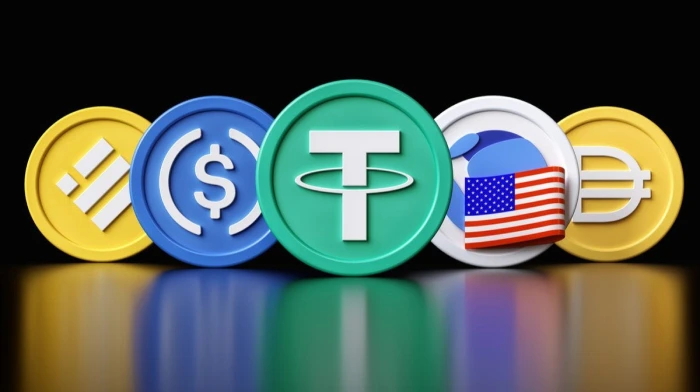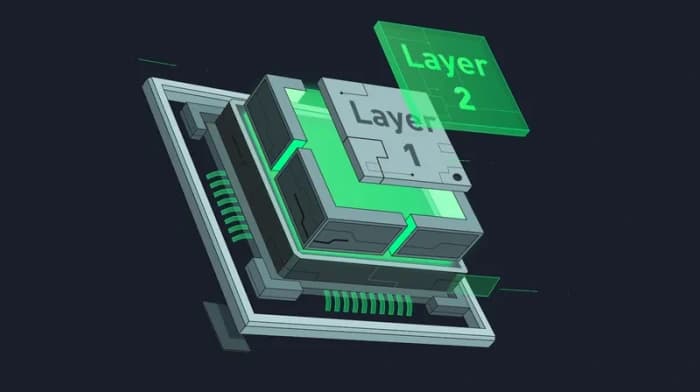
Introduction
The concept of a currency is pretty intriguing especially when you consider the wild price swings that Bitcoin and Ethereum are known for. What if you could merge the benefits of cryptocurrency with the stability of money? That's where stablecoins come in.
Stablecoins work by tying their value to something that's generally seen as dependable like the U.S. Dollar or gold. This way they can avoid the price fluctuations that are so common in the cryptocurrency world. It's this stability that's made them absolutely crucial for things like sending money across borders using finance apps and making international transactions.
The world of payments is on the cusp of a revolution and businesses, financial institutions, and blockchain developers are taking notice. They're discovering the potential of stablecoins to facilitate seamless transactions. As a result, many of them are now looking into developing their own stablecoin.
For newcomers to the scene like startups and for developers in tokenization, figuring out where to start can be daunting. That's why a clear plan of action is essential. This guide sets out to provide that - a roadmap for creating and deploying a stablecoin that actually works.
What is a Stablecoin?
Essentially it's a type of cryptocurrency that's designed to hold its value steady. This is achieved by anchoring it to something like a currency, a financial instrument, or even a commodity.
Most cryptocurrencies like Bitcoin are notoriously unpredictable, which makes them pretty useless for everyday transactions. This is where stablecoins come in. They're a type of digital currency designed to be more stable.
Key Characteristics of Stablecoins
In essence, a stablecoin is a form of digital money that behaves like reliable traditional currencies. A lot of these stablecoins are actually backed by real-world assets. Many are directly linked to the value of currencies like the Euro or US dollar. This means they can be bought and sold on exchanges, which helps keep their value steady.
Stablecoins can also be tied to the value of other assets such as gold or other digital currencies. This sets them apart from traditional cryptocurrencies, which can be notoriously unpredictable.
Benefits of Stablecoins
Instead, stablecoins offer a stable store of value without losing the benefits that come with digital currencies:
- Transactions can't be tampered with
- Everything is transparent and out in the open
- Transfers happen quickly
- Higher level of security
- Convenience of digital wallets
- Greater degree of privacy
- Lower transaction fees
Essentially you get the best of both worlds: the stability of traditional money and the innovations of blockchain technology.
Main Types of Stablecoins
The main types of stablecoins can be broken down into several categories:
Collateralized Stablecoins
Collateralized stablecoins are a type of digital currency that gets its value from being backed by assets. There are a few types of these stablecoins, each with its own way of doing things.
Fiat-Backed Stablecoins
One kind is called fiat-backed stablecoins. These are tied to the value of traditional currencies like the US dollar. Tether, also known as USDT, was one of the first to do this. It showed that a cryptocurrency could be backed by reserves that are equal in value to the amount of money people have invested and that this value could be tied to the US dollar.
Other examples of this type of stablecoin include:
- USD Coin
- PAXOS Standard
Asset-Backed Stablecoins
Then there are asset-backed stablecoins. These are backed by things other than cryptocurrency or regular currency. They can be supported by a range of assets, which gives them a different kind of stability.
Their tokens are tied to things that have intrinsic value, like:
- Gold
- Silver
- Diamonds
- Oil
- Real estate
- Other commodities
Crypto-Backed Stablecoins
Some stablecoins are backed by cryptocurrencies, which can be unpredictable. To keep them stable, they use sophisticated systems.
For example, the DAI token is a stablecoin backed by Ether and valued at the same rate as the US dollar. It stays stable because of the Maker Smart Contract, which makes or removes MKR tokens when the price of Ether changes. This helps keep the price of DAI steady.
Algorithmic Stablecoins
Algorithmic Stablecoins
In the world of cryptocurrency, there's a type of stablecoin that doesn't rely on collateral to back its value. These are often called seigniorage shares or algorithmic stablecoins. They're all about embracing the decentralized spirit of crypto.
A lot of crypto fans think that stablecoins should get their value from algorithms rather than being backed by traditional assets. This approach means that these stablecoins aren't tied to the strength of a central authority. Instead, their value is determined by mathematical formulas that take into account supply and demand.
How Algorithmic Stablecoins Work
Algorithmic stablecoins work a bit differently than traditional stablecoins. They don't just rely on holding reserve assets to stay stable. Instead, they use algorithms to control the supply of coins in circulation. These algorithms follow a set of predefined rules similar to how central banks manage their currency's value.
For example, the US Federal Reserve sets monetary policy based on established guidelines, and its credibility comes from being the official issuer of legal tender.
Algorithmic Stablecoin Examples
One notable example of this is Basis, a stablecoin that uses algorithms to stay stable. It's had some big-name investors, including Bain Capital Ventures, Polychain Capital, and GV, who put in a total of $133 million. This shows that there's serious interest in the idea of stablecoins that don't need collateral to work.
Why Stablecoins Are Important
The fact that stablecoins exist is really important for the cryptocurrency world. They offer several key benefits:
- Stable store of value that doesn't fluctuate wildly
- Medium for exchanging cryptocurrencies efficiently
- Risk reduction for people who use or invest in cryptocurrencies
- Market stability by reducing price swings
Managing Market Volatility
Stablecoins bring a sense of calm to the world of cryptocurrency by reducing the ups and downs that come with digital coins. This makes them ideal for transactions in areas like decentralized finance and cross-border payments.
On cryptocurrency exchanges, stablecoins are often used as a low-risk option for trading. They give investors the freedom to buy and sell without needing to involve traditional currency, which is handy for managing risk.
Facilitating Blockchain Transactions
Before trading on cryptocurrency exchanges, people often need to convert their money into stablecoins like USDT or USDC. This is because these digital coins keep their value steady, which makes them perfect for transactions on the blockchain.
Stablecoins like Tether are actually among the most traded assets on the blockchain. They're really useful for:
- Sending money across borders
- Use in DeFi protocols
- Making transactions more efficient
DeFi Integration
The whole DeFi ecosystem depends on stablecoins to work properly. They provide the necessary funds for things like lending services and what's known as liquidity pools.
DeFi Lending Protocols Using Stablecoins
| Protocol | Primary Function | Benefits |
|---|---|---|
| Aave | Lending and borrowing | Reduced volatility risk |
| Compound | Interest earning | Stable returns |
| MakerDAO | DAI generation | Decentralized stability |
DeFi Protocol Benefits
DeFi lending protocols such as Aave and Compound use stablecoins to offer loans, which helps borrowers and lenders steer clear of the risks that come with volatile assets like Bitcoin.
Primary Use Cases of Stablecoins
The main uses of stablecoins are pretty varied. They offer a lot of benefits and can be used in different ways, which makes them really useful in the world of cryptocurrency.
Volatility Reduction
One of the biggest problems with cryptocurrencies like Bitcoin and Ether is that their value can fluctuate wildly in just a matter of minutes. Stablecoins can help minimize this volatility.
Stablecoins are a breath of fresh air for buyers and sellers, providing a sense of security in an unpredictable market. With stablecoins, the value of your tokens stays pretty consistent without those gut-wrenching crashes or dizzying surges that can leave you reeling.
Asset Storage and Trading
When it comes to trading or saving assets, stablecoins are a game-changer:
- You don't need a traditional bank account to hold them
- Transferring them is a breeze
- Great option for sending money to areas where getting US dollars is tough
- Useful when dealing with unstable local currencies
Interest Earning Opportunities
One of the perks of stablecoins is the potential to earn interest. In many cases, the rates are higher than what you'd get from a traditional bank, making them a compelling option for investors looking to grow their wealth.
People seeking to grow their wealth with minimal risk often find stablecoins appealing.
Cost-Effective Money Transfers
When it comes to moving money, stablecoins are an efficient way to do it on the cheap:
- Transfer any amount of money with minimal fees
- Good option for both small and large transactions
- Cross-border transfers are easier and more affordable
- Quick processing times
- More accessible way to move money around the world
How to Create a Stablecoin
To make a stablecoin, there are several important steps to follow:
Step 1: Choose the Type of Stablecoin
When it comes to developing a stablecoin, the first step is to decide what kind to create. Basically, there are two main types: those that are backed by collateral and those that aren't.
Deciding between the two can be tough since neither one is always better than the other. Consider these factors:
- Long-term stability: If stability over the long haul is what you're after, an algorithmic stablecoin could be the way to go
- Short-term stability: For short-term stability, collateralized stablecoins might be a better fit
- Liquidity needs: How much liquidity do you need from your stablecoins?
- Decentralization: Are you looking for something that's more independent or decentralized?
- Audit requirements: Can you afford to have regular audits done to build trust and reduce risk?
- Architecture complexity: Do you want the architecture to be simple or more complex?
Step 2: Select a Blockchain Platform
Choosing the right blockchain platform and technologies is a major step. The world of stablecoins has undergone a significant transformation since Ethereum first dominated the scene.
Platform Options
In the early days, most stablecoins called Ethereum home. That's no longer the case. New blockchain platforms have cropped up and they're now being used to develop these coins:
- Ethereum: Still popular but facing scalability challenges
- Tron: Becoming a popular choice for stablecoin development
- EOS: Gained popularity in 2019 with multiple stablecoin projects
2019 was a significant year for EOS. Several stablecoin projects launched on the platform, including Carbon (CUSD token), Tether, EUSD, and EOSDT.
Platform Comparison
Platform Comparison
For some developers, EOS has an edge over Ethereum mainly because of a couple of benefits:
- Interoperability: EOS offers better interoperability features
- Scalability: EOS can handle a higher volume of transactions
- Transaction costs: Generally lower fees compared to Ethereum
Step 3: Maintain Liquidity
After you've picked the platform and technologies, the focus shifts to keeping everything running smoothly. This is where maintaining liquidity comes in - it's a crucial step because without liquidity, even a well-designed stablecoin project can come crashing down.
Liquidity Strategies
To keep things running smoothly, it's a good idea to have several strategies in place for maintaining liquidity:
Monitor Economic Indicators
- Set up automated systems that check and update currency rates daily
- Track inflation using Consumer Price Index and Personal Consumption Expenditures
- Monitor the value of backing assets regularly
Fee Revenue Management
- Divide transaction fee revenue among different parties
- Allocate portion to partners
- Put remainder into reserve funds to boost liquidity
Supply Protection
- Allow users to redeem stablecoins at face value
- Prevent market dumping at discounted prices
- Maintain stable trading environment
Step 4: Develop Smart Contracts
Creating a smart contract is a crucial part of developing a stablecoin and a major key to succeeding in the cryptocurrency business. At its core, a smart contract is a self-executing agreement that offers a high level of security.
For a stablecoin to be reliable and trustworthy on blockchain platforms, the right protocols need to be in place for developing these contracts. The process typically involves:
- Creating the smart contract code
- Testing on development networks
- Launching on test networks
- Using test wallets for verification
This is a critical step in ensuring the stability and authenticity of the stablecoin.
Step 5: Design User Interface and System Architecture
Now that we have a plan in place, it's time to think about the technical aspects of things. To create a stablecoin, you need to understand how money will move around and how the whole system will work.
This might mean designing a way for people to interact with your token, which could involve:
- Building a website interface
- Developing a mobile app
- Creating user-friendly web applications
- Mapping out the stablecoin workflow process
The goal here is to create an interface that's easy to use, whether that's on the web or on a mobile device.
Step 6: Development and Testing
The next step is to bring everything to life. Once the design is done, it's time to start building:
- Develop the backend system
- Prepare integration with chosen blockchain platform
- Write smart contracts for stablecoin interaction
- Set up nodes on the blockchain platform
- Link stablecoin features to blockchain backends
Testing Phase
Once the stablecoin features are in place and linked to the blockchain backends, it's time to launch on test networks. On Ethereum, for instance, there are several test networks to choose from.
A good approach is to:
- Have different groups try out the product on test networks
- Collect feedback on how to make improvements
- Iron out any technical issues
- Ensure security and functionality
Step 7: Mainnet Launch
When testing is complete and any issues have been ironed out, it's time to launch your stablecoin on the mainnet.
Example: Gold-Backed Stablecoin Development
Creating a stablecoin can be a complex process, but it can also be relatively straightforward. For instance, imagine developing a gold-backed stablecoin on the Ethereum platform.
Concept Overview
This type of stablecoin would be supported by physical gold holdings that have been verified. Each token would represent the value of 1 gram of gold. This means that the benefits of owning gold - like being able to buy and sell it, transfer it to someone else, and knowing that it's fully backed by real gold assets - would still apply.
Implementation Process
Gold Storage and Custody
When it comes to gold-backed stablecoins, the process starts with storing gold with trusted custodians. Once the gold is submitted, a detailed record is made, including:
- The gold's serial numbers
- Any changes in custody
- Purchase receipts
- Digital signatures of the custodians
Blockchain Recording
This information is then stored on a distributed ledger, creating a tamper-proof proof of ownership. The actual creation of gold-backed tokens can't happen until the gold is safely stored with the custodians.
Token Minting
As soon as the custody events are recorded on the blockchain complete with timestamps, smart contracts spring into action, triggering the minting of new tokens. This ensures that the tokens are actually backed by gold, giving them a level of stability and trustworthiness that's hard to achieve with other types of cryptocurrencies.
Distribution and Compliance
Once these digital tokens are created, they're added to the organization's collection and can then be distributed to users. To stay on the right side of the law, it's a good idea to bring in outside help like anti-money laundering (AML) and know your customer (KYC) services to make sure the people using the system are who they claim to be.
Technical Infrastructure for Stablecoins
Building a comprehensive system for stablecoins is a complex job that needs careful work on both the user interface and the underlying infrastructure.
Frontend and Backend Architecture
The technology behind a stablecoin can be broken down into two main parts:
Frontend (User Interface)
- Mobile apps for iOS and Android
- Web applications
- User-friendly interfaces for token management
- Portfolio tracking and transaction history
Backend (Infrastructure)
- Built on blockchain platforms
- Provides underlying infrastructure
- Handles transaction processing
- Manages smart contract interactions
Third-Party Integrations
To make a stablecoin useful, you need to be able to integrate it with various services:
Wallet Integration
- Third-party wallets like Coinbase for storage and transfers
- Multiple wallet options for user convenience
- Secure storage solutions
- Easy transfer capabilities
Market Data APIs
- Stock exchange APIs for real-time asset values
- Essential for asset-backed stablecoins
- Up-to-date information about backing asset values
- Price feeds for stability mechanisms
Payment Processing
- Bank and merchant account APIs
- Multiple payment methods for token purchases
- Convenient user experience
- Fiat on-ramps and off-ramps
Development Costs and Considerations
The cost of creating a stablecoin can vary greatly depending on what type it is. Different stablecoins have different production costs, and this difference in cost can be significant.
Cost Breakdown
Producing asset-backed stablecoins is often a more straightforward and affordable process, with costs typically falling between $10,000 and $12,000 for basic implementations.
However, more complex stablecoins with advanced features, extensive integrations, and regulatory compliance can cost significantly more, potentially reaching hundreds of thousands of dollars.
Development Challenges
Development Challenges
The process is not without its challenges:
Technical Challenges
- Integrating third-party services can be a major hurdle
- Maintaining liquidity is another critical issue
- Ensuring smart contract security
- Scalability considerations
Regulatory Compliance
- Ensuring the stablecoin complies with regulations
- AML and KYC requirements
- Legal framework compliance
- Ongoing regulatory monitoring
Market Challenges
- Maintaining stable peg to underlying assets
- Managing market volatility
- Ensuring sufficient liquidity
- Building user trust and adoption
Professional Development Services
When it comes to cryptocurrencies, there are a lot of things that can go wrong. That's where companies that specialize in this area come in. They can help with everything from making sure smart contracts are secure to dealing with all the regulatory requirements that come with it.
Comprehensive Solutions
Professional development companies basically offer a complete package to help people overcome the obstacles that come with cryptocurrency development:
- Smart contract development and auditing
- Regulatory compliance guidance
- Security assessments and penetration testing
- Integration with third-party services
- Ongoing maintenance and support
- Market making and liquidity provision
Benefits of Professional Development
Creating a stablecoin, whether it's backed by gold or some other asset, is a complex endeavor that demands careful planning and skilled execution. Stability, security, and compliance are just a few of the critical considerations that must be carefully balanced in order to succeed.
Companies that specialize in blockchain development can offer a comprehensive solution that covers every stage of the process, from initially conceptualizing the stablecoin to deploying it on a blockchain network.
Ready to Build Your Stablecoin?
Transform your vision into reality with our expert blockchain development services. We provide end-to-end stablecoin development, from concept to deployment, ensuring security, compliance, and market success.
Conclusion
Stablecoins represent a crucial innovation in the cryptocurrency space, bridging the gap between traditional finance and digital assets. They offer the stability of fiat currencies while maintaining the benefits of blockchain technology.
Creating a successful stablecoin requires careful consideration of multiple factors, from choosing the right backing mechanism to ensuring regulatory compliance and maintaining adequate liquidity. While the development process can be complex, the growing demand for stable digital assets makes stablecoins an increasingly important part of the financial landscape.
Whether you're a startup looking to enter the cryptocurrency space or an established financial institution exploring digital assets, understanding stablecoins and their development process is essential for navigating the evolving world of digital finance.


